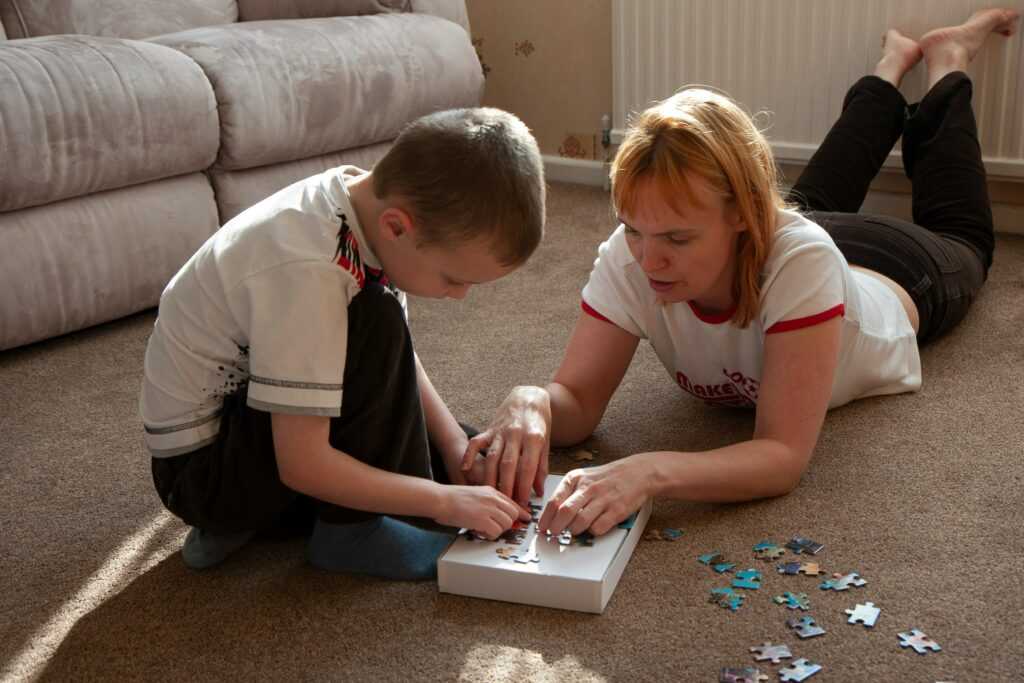The Diagnosis That Shifted Everything
It started quietly. A missed milestone here, a strange look from a stranger there. Other kids at the playground began to outpace mine talking sooner, responding faster, moving with more ease. At first, I told myself every child moves at their own rhythm. But deep down, I knew. Something felt… different.
Then came the string of referrals. Pediatricians. Specialists. Waiting rooms full of clipboards and outdated magazines. Tests. Observations. And eventually, the words that took the air out of the room. A diagnosis. One that sounded clinical and cold, but hit like a freight train.
I remember nodding, trying to absorb it while already thinking too far ahead. What would school look like? Friendships? Adulthood? It was all fear, all questions, no answers.
But over time, something shifted. I stopped looking for what was wrong and started learning what was true. Separating fear from fact took time. It took tears. But once I did, the fog started to lift. I started to understand my child not the diagnosis, but the person right in front of me. And that changed everything.
Becoming the Parent My Child Needed
At some point, I had to let go of the life I thought I’d have and lean into the one my child actually needed. That meant unlearning a lot how I measured success, how I prioritized time, and how I coped with unpredictability. Morning routines became quieter, more intentional. Milestones weren’t about hitting certain dates anymore; they were about presence, effort, and progress in any form.
Therapy became a second home. Physical, occupational, speech you name it, we were there. Each appointment came bundled with paperwork, waiting rooms, and conversations that required a brave sort of honesty. Sometimes that meant asking the same question five different ways until I understood the answer. Sometimes it meant sitting in silence beside my kid, knowing I couldn’t fix it, but I wasn’t going anywhere.
Small wins became my metric for good days. A new word. Holding a spoon the right way. Making it through a session without a meltdown. These moments didn’t look like much from the outside, but for us, they were breakthroughs. They reminded me that progress isn’t always loud or fast it just needs to be ours.
A New Definition of Strength

Raising a child with special needs reshapes your idea of strength faster than you ever imagined. It’s not the loud, dramatic kind of strength seen in movies. It’s quiet, persistent, and often unseen by the outside world.
Resilience in the Hardest Hours
There were nights when sleep barely existed when worry, exhaustion, and the unknown felt overwhelming. In those moments, strength looked like:
Waking up for the fifth time to comfort your child
Learning to function on little rest and constant alertness
Pushing past your own limits to give them what they need
Those nights didn’t break me. They built something stronger inside me: resilience that doesn’t waver in the face of setbacks.
Advocacy as a Daily Practice
Advocating for your child becomes second nature not because it’s easy, but because it becomes essential. You learn to:
Speak up in rooms where no one else will
Read between the lines of progress notes and appointment summaries
Ask the hard questions, even when the answers are unclear
Over time, you stop hesitating. You know your child better than anyone else, and that knowledge fuels your voice.
Bonds Built Through Challenge
Navigating this journey also tested my closest relationships. Some faded, strained by discomfort or misunderstanding. But the ones that remained? They grew stronger, beyond what I thought possible:
Honest conversations with my partner about fear and hope
Leaning on family when pride once stopped me from asking
Friendships that deepened because they stood by me, not around me
The hard parts didn’t just reveal cracks they forged powerful connections through them.
Lessons No One Else Could Teach Me
There’s no manual for this kind of parenting. What I’ve learned didn’t come from books or blogs it came straight from the quiet, slow, honest rhythm of our daily life together. My child has taught me to pause. Not just slow down, but stop. To put the to do list aside and be fully present because some moments don’t come around twice.
Patience isn’t just waiting; it’s waiting with purpose. Therapy sessions that go in circles, milestones that arrive years late, or not at all you either build patience or you break. And somewhere in the middle of those long days, I found something else: perspective. Not the kind people toss around to sound wise, but the hard won kind that shifts how you see everything. I don’t take little things for granted anymore. I know what effort looks like. I know joy when I see it, no matter how small.
Comparison used to eat me alive. Other parents, other kids, other timelines. I’ve let that go or at least wrestle it down when it tries to sneak back in. My child isn’t behind; they’re on their own track. Same goes for me. I’ve learned to embrace this version of life, not the one I thought I signed up for.
Every day, my child shows me what resilience looks like in real time. They face a world that isn’t always built for them, yet they still show up, still try. And they don’t care about applause. They live in the now. That’s become my goal to meet them there.
Finding a Community That Gets It
No one talks enough about how lonely this path can feel until you’re in it. After the diagnosis, what hit hardest wasn’t just the uncertainty or the logistics. It was the silence. Friends didn’t always know what to say. Playdates dried up. The usual advice didn’t apply.
But I learned quickly: silence doesn’t have to mean solitude. I started reaching out. Not to everyone to the right ones. I found support groups, local and online. I connected with parents who didn’t flinch when I shared the hard stuff. They got it, because they were living it too. There’s something powerful about hearing, “me too,” from someone who truly understands.
Sharing our stories raw, honest, sometimes messy was healing. I stopped apologizing for needing help. In return, I got answers, laughs, late night texts, and reminders that I wasn’t alone in this.
If you’re looking for a place to start, this story helped me reframe a lot: special needs parenting. Read it. Then reach out to someone. That’s the first step.
Moving Forward With Gratitude
There was a time I asked, “Why me?” quietly, then out loud, then into a pillow on too many nights I can’t forget. That question carried more weight than I could hold. But slowly, as days turned into years, it gave way to something else: gratitude. Not the shiny, false kind. The kind earned through living it. Through watching my child struggle, adapt, grow and teach me what resilience really means.
I don’t pretend the road ahead is smooth. There are still therapies, hard conversations, unknowns we haven’t met yet. But there’s also laughter in unexpected moments, milestones no chart could capture, and a connection with my child that goes beyond words. I’m not naive. Just grounded. Open hearted, realistic, and ready.
What I can promise is simple: I’ll keep showing up. Every single day. For my child. For the life we’ve built. For the parent I’m still becoming.
Discover more of these real, raw, and resilient journeys at special needs parenting.

 Reginalita Leeons played a vital role in building the supportive environment that Motherhood Tales Pro is known for. With a strong background in wellness and outreach, she guided the development of resources that address the holistic needs of mothers. Her compassionate input ensured that every offering—from blog posts to wellness tools—felt thoughtful, inclusive, and empowering.
Reginalita Leeons played a vital role in building the supportive environment that Motherhood Tales Pro is known for. With a strong background in wellness and outreach, she guided the development of resources that address the holistic needs of mothers. Her compassionate input ensured that every offering—from blog posts to wellness tools—felt thoughtful, inclusive, and empowering.